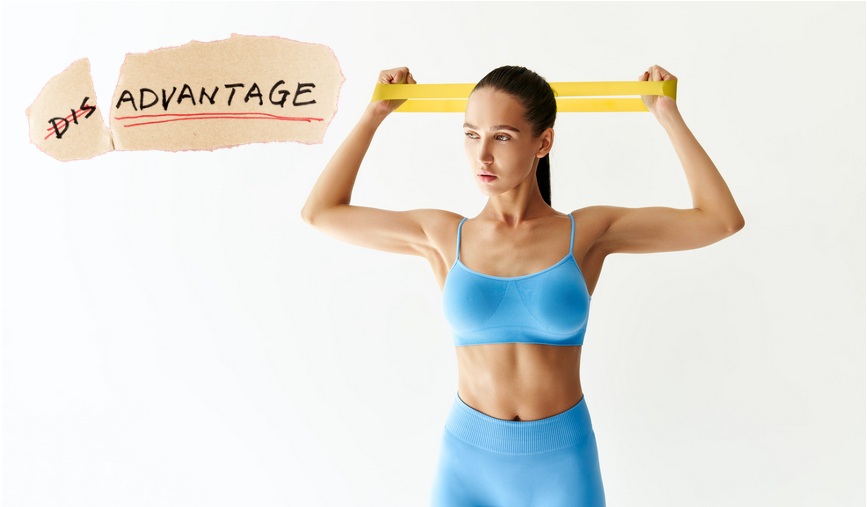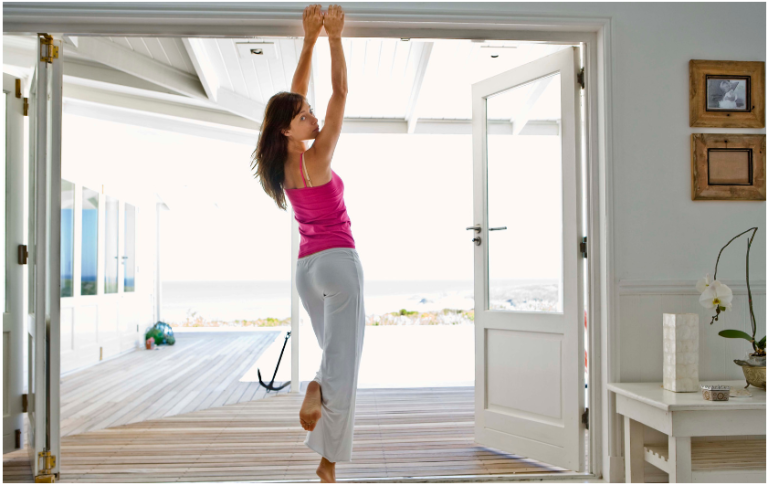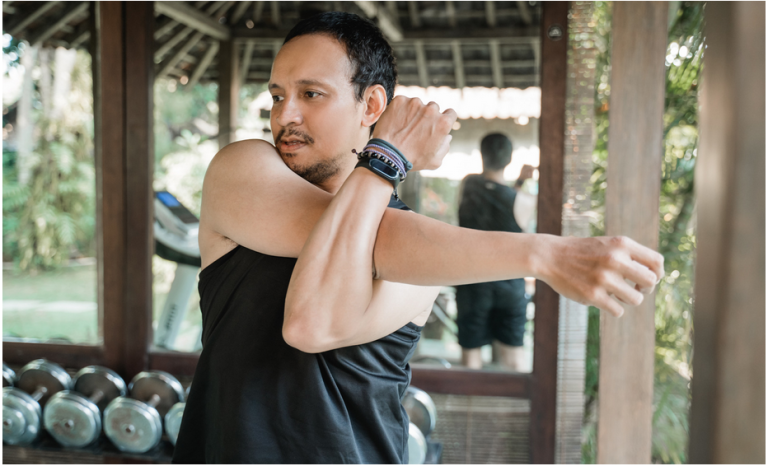
What is a Disadvantage of Active Stretching? The Pros and Cons of Stretching Exercises

Stretching is a form of exercise that involves elongating a muscle or a group of muscles to improve flexibility and range of motion and prevent injury. Stretching is often used as a warm-up or a cool-down activity and a way to relax and relieve stress. But not all stretching is the same.
Different types of stretching exercises have different effects on the body and performance. In this article, we will focus on one type of stretching: active stretching. We will explain what active stretching is, how it differs from other forms of stretching, its advantages and disadvantages, and how to do it safely and effectively.
Active stretching can be dangerous if done incorrectly. Learn how to avoid common mistakes and stretch safely by reading this article: Stretching is now considered dangerous. Also, you may think active stretching is good for your muscles, but it can make them stiffer and tighter. Find out why this happens and how to prevent it by clicking here: Why do I feel stiffer after stretching?
What is Active Stretching?
Active stretching is a method of stretching that involves contracting the muscle opposite to the one being stretched without any external assistance. For example, if you want to stretch your hamstrings, you would contract your quadriceps and lift your leg, keeping it straight. Active stretching uses muscle strength to create tension and stretch the target muscle.
Active stretching is also known as static-active stretching because it involves holding a position for a certain amount of time, usually between 10 to 30 seconds. Active stretching differs from passive stretching, which involves using an external force, such as a partner, a strap, or gravity, to stretch a muscle. Passive stretching is also known as static-passive stretching because it involves holding a position for a long time.
Another form of stretching that is often confused with active stretching is dynamic stretching. Dynamic stretching involves moving a joint through its full range of motion without holding any position. Dynamic stretching uses momentum and speed to create tension and stretch the muscles. Dynamic stretching is also known as ballistic stretching because it involves bouncing or swinging movements.
What is the Focus of Dynamic Stretching?

Dynamic stretching is mainly used as a warm-up activity to prepare the muscles and joints for the specific movements and demands of the sport or activity. Dynamic stretching can improve blood flow, oxygen delivery, muscle temperature, and neural activation, enhancing athletic performance and preventing injury. Dynamic stretching can also improve flexibility and range of motion, but not as much as static stretching.
Some examples of dynamic stretching are arm circles, leg swings, lunges, and high knees. Dynamic stretching should be done gradually, starting with low intensity and a small range of motion and increasing progressively. Dynamic stretching should be specific to the sport or activity and mimic the movements that will be performed.
Which is an Essential Component of Safe Passive Stretching?
Passive stretching is mainly used as a cool-down activity to relax the muscles and joints after the sport or activity. Passive stretching can reduce muscle soreness, stiffness, and inflammation, speeding up recovery and preventing injury. Passive stretching can also improve flexibility and range of motion by increasing the length and elasticity of the muscle fibres.
Some examples of passive stretching are hamstring stretch, quadriceps stretch, and shoulder stretch. Passive stretching should be done gently, without forcing or bouncing. An essential component of safe passive stretching is breathing deeply and relaxing, which can help ease muscle tension and pain. Passive stretching should be done for at least 10 seconds and up to 60 seconds, depending on the goal and the muscle group.
5 Disadvantages of Stretching

Stretching is generally considered beneficial for health and fitness but has drawbacks. Here are some of the disadvantages of stretching:
1. Stretching can cause injury
Stretching can cause muscle tears, joint sprains, nerve damage, and inflammation if done incorrectly or excessively. Stretching can also aggravate existing injuries or interfere with the healing process. Some factors that can increase the risk of injury from stretching are lack of warm-up, poor technique, overstretching, bouncing, holding the breath, and stretching cold or sore muscles.
2. Stretching can reduce performance
Stretching can reduce muscle strength, power, and speed before the sport or activity. Stretching can also impair coordination, balance, and reaction time, affecting skill and technique. Some mechanisms that can explain the negative effects of stretching on performance are reduced muscle tension, decreased neural activation, altered muscle-tendon unit length, and increased joint laxity.
3. Stretching can be time-consuming
Stretching can take much time, especially for multiple muscle groups and long durations. Stretching can also be boring, tedious, and uncomfortable, reducing motivation and adherence. Stretching can also interfere with the optimal timing and sequencing of the sport or activity, affecting performance and enjoyment.
4. Stretching can be ineffective
Stretching can be ineffective for improving flexibility and range of motion if done infrequently, inconsistently, or incorrectly. Stretching can also be ineffective for preventing injury if done in isolation without addressing other factors, such as strength, stability, mobility, and alignment. Stretching can also be ineffective for relieving pain if done without identifying and treating the underlying cause of the pain.
5. Stretching can be inappropriate
Stretching can be inappropriate for certain populations, conditions, or situations that can be harmful or contraindicated. Stretching can be inappropriate for people with acute or chronic injuries, inflammation, infection, osteoporosis, joint instability, or hypermobility. Stretching can also be inappropriate for situations where the muscle is elongated, the joint is already at its end range, or the sport or activity requires high muscle tension or stiffness.
Why are Ballistic Stretches Considered Dangerous?
Ballistic stretches are considered dangerous because they can cause injury and reduce performance. Ballistic stretches involve bouncing or swinging movements that create momentum and force the muscle to stretch beyond its normal range of motion. Ballistic stretches can cause muscle tears, joint sprains, nerve damage, and inflammation by exceeding the elastic limit of the muscle-tendon unit or by triggering the stretch reflex, which causes the muscle to contract involuntarily. Ballistic stretches can also reduce muscle strength, power, and speed by decreasing muscle tension, neural activation, and muscle-tendon unit stiffness.
Ballistic stretches are not recommended for most people, especially beginners, older adults, and people with injuries or conditions that affect the muscles or joints. Ballistic stretches can be used by some athletes, such as sprinters, jumpers, and martial artists, who need to improve their explosive power and dynamic flexibility, but only under the guidance of a qualified coach or trainer and after a proper warm-up.
Advantages and Disadvantages of Active Stretching
Active stretching is a type of stretching that has both advantages and disadvantages, depending on the goal, the individual, and the situation. Here are some of the pros and cons of active stretching:
Pros of Active Stretching
- Active stretching can improve flexibility and range of motion by increasing the length and elasticity of the muscle fibres and by improving the neuromuscular coordination and control of the muscle being stretched.
- Active stretching can prevent injury and enhance performance by activating and strengthening the muscles that oppose those being stretched, improving joint stability, balance, and posture.
- Active stretching can increase blood flow, oxygen delivery, and nutrient supply to the muscles, improving muscle function, recovery, and health.
- Active stretching can reduce muscle soreness, stiffness, and fatigue by removing metabolic waste products like lactic acid from the muscles, improving muscle relaxation and comfort.
- Active stretching can be done anytime, anywhere, without any equipment or assistance, which makes it convenient, accessible, and cost-effective.
Cons of Active Stretching
- Active stretching can be difficult and demanding because it requires high muscle strength, endurance, and coordination, which can be challenging for some people, especially beginners, older adults, and people with injuries or conditions that affect the muscles or joints.
- Active stretching can be uncomfortable and painful because it involves contracting the muscle opposite to the one being stretched, which can create a lot of tension and pressure in the muscles and joints, which can be unpleasant and discouraging.
- Active stretching can be ineffective and counterproductive if done incorrectly or excessively, which can cause muscle damage, joint instability, or reduced flexibility and range of motion by creating scar tissue, adhesions, or contractures in the muscle-tendon unit.
- Active stretching can be inappropriate and unsafe for certain populations, conditions, or situations that can be harmful or contraindicated. Active stretching can be inappropriate and unsafe for people with acute or chronic injuries, inflammation, infection, osteoporosis, joint instability, or hypermobility. Active stretching can also be inappropriate and unsafe for situations where the muscle is already contracted, the joint is already at its end range, or the sport or activity requires high muscle tension or stiffness.
Disadvantages of PNF Stretching
PNF stretching, or proprioceptive neuromuscular facilitation stretching, involves alternating between contracting and relaxing the muscle being stretched with the help of a partner, a strap, or a wall. PNF stretching is also known as contract-relax or hold-relax stretching because it involves holding a contraction for a few seconds, then relaxing and stretching the muscle for a few seconds. PNF stretching is one of the most effective ways to improve flexibility and range of motion, but it also has some disadvantages, such as:
- PNF stretching can cause injury and pain if done incorrectly or excessively, which can cause muscle tears, joint sprains, nerve damage, and inflammation by exceeding the elasticity.
- PNF stretching can be complicated and time-consuming because it requires a specific technique, sequence, and timing, which can be difficult to master and follow. PNF stretching also requires a partner, a strap, or a wall, which can be inconvenient, inaccessible, or costly. PNF stretching can also take up a lot of time, especially for multiple muscle groups and long durations.
- PNF stretching can be ineffective and counterproductive if done infrequently, inconsistently, or incorrectly, which can cause muscle damage, joint instability, or reduced flexibility and range of motion by creating scar tissue, adhesions, or contractures in the muscle-tendon unit. PNF stretching can also impair performance if done before the sport or activity by decreasing muscle tension, neural activation, and muscle-tendon unit stiffness.
- PNF stretching can be inappropriate and unsafe for certain populations, conditions, or situations where it can be harmful or contraindicated. PNF stretching can be inappropriate and unsafe for people with acute or chronic injuries, inflammation, infection, osteoporosis, joint instability, or hypermobility. PNF stretching can also be inappropriate and unsafe for situations where the muscle is already contracted, the joint is already at its end range, or the sport or activity requires high muscle tension or stiffness.
What is a Disadvantage of Active Stretching Exercises?
Active stretching exercises are a type of stretching that has many benefits but also some drawbacks. One of the main disadvantages of active stretching exercises is the risk of injury.
Active stretching exercises involve contracting the muscle opposite to the one being stretched, which can create tension and pressure in the muscles and joints. If the muscle is overstretched or the joint is overextended, it can cause muscle tears, joint sprains, nerve damage, or inflammation. This can happen if the person does not have enough strength, endurance, or coordination to perform the active stretches or does not warm up properly, uses poor technique, bounces, holds the breath, or stretches cold or sore muscles.
Another disadvantage of active stretching exercises is that they can be ineffective and counterproductive if done incorrectly or excessively. Active stretching exercises can reduce flexibility and range of motion if the muscle is not relaxed and stretched enough or if the muscle is stretched too often or too long, which can create scar tissue, adhesions, or contractures in the muscle-tendon unit. Active stretching exercises can also reduce performance by decreasing muscle tension, neural activation, and muscle-tendon unit stiffness if done before the sport or activity.
How to Do Active Stretching Exercises Safely and Effectively?
Active stretching exercises can be done safely and effectively if some precautions and guidelines are followed. Here are some tips on how to do active stretching exercises:
- Warm up before doing active stretching exercises by doing some light cardio, such as jogging, cycling, or skipping, for 5 to 10 minutes to increase blood flow, oxygen delivery, muscle temperature, and neural activation, which can prevent injury and enhance performance.
- Choose active stretches specific to the sport or activity and target the muscles and joints used. For example, if you are going to play soccer, you can do active stretches for your hamstrings, quadriceps, calves, hips, and ankles.
- Perform active stretches gradually, starting with low intensity and a small range of motion and increasing progressively. Do not force or bounce the stretch, but move smoothly and steadily until you feel a mild to moderate stretch in the target muscle. Hold the stretch for 10 to 30 seconds, depending on the goal and the muscle group. Breathe deeply, relax, and do not hold your breath or tense up your muscles.
- Do not overstretch or overdo the active stretches, which can cause injury or reduce flexibility and performance. Do not stretch beyond your normal range of motion or to the point of pain or discomfort. Do not stretch the same muscle group more than once a day or more than three times a week unless advised by a professional. Only stretch for 10 minutes if advised by a professional.
- Be careful when doing active stretches, and listen to your body. Stop the stretch immediately and consult a doctor or a physiotherapist if you feel any pain, discomfort, or instability. If you have any injuries or conditions that affect the muscles or joints, or if you are pregnant, elderly, or have any medical issues, consult a doctor or a physiotherapist before doing any active stretches.
Summary
Active stretching is a type of stretching that involves contracting the muscle opposite to the one being stretched without any external assistance. Active stretching can improve flexibility and range of motion, prevent injury and enhance performance, increase blood flow and nutrient supply to the muscles, and reduce muscle soreness and fatigue.
However, active stretching also has disadvantages, such as the risk of injury, reduced performance, difficulty and discomfort, ineffectiveness and counterproductiveness, and the inappropriateness and unsafety for certain populations, conditions, or situations. Therefore, active stretching should be done carefully, correctly, and moderately, following some precautions and guidelines to ensure safety and effectiveness.
Here are some of the key points to remember:
- Active stretching is also known as static-active stretching because it involves holding a position for a certain amount of time, usually between 10 to 30 seconds.
- Active stretching differs from passive stretching, which involves using an external force, such as a partner, a strap, or gravity, to stretch a muscle. Passive stretching is also known as static-passive stretching because it involves holding a position for a long time.
- Active stretching differs from dynamic stretching, which involves moving a joint through its full range of motion without holding any position. Dynamic stretching uses momentum and speed to create tension and stretch the muscles. Dynamic stretching is also known as ballistic stretching because it involves bouncing or swinging movements.
- Active stretching can cause injury and reduce performance if done incorrectly or excessively. Some factors that can increase the risk of injury and reduce performance from active stretching are lack of warm-up, poor technique, overstretching, bouncing, holding the breath, and stretching cold or sore muscles.
- Active stretching can be done safely and effectively if some precautions and guidelines are followed. Some of the tips on how to do active stretching are: warm up before doing active stretching, choose active stretches that are specific to the sport or activity, perform active stretches gradually and smoothly, do not overstretch or overdo the active stretches, and be careful when doing active stretches. Limit the muscle-tendon unit by triggering the stretch reflex, which causes the muscle to contract involuntarily. PNF stretching can also cause pain and discomfort by creating tension and pressure in the muscles and joints, which can be unpleasant and discouraging.
Frequently Asked Questions (FAQs) About Active Stretching
Active stretching is a form of stretching that involves contracting the muscle opposite to the one being stretched without any external assistance. Active stretching can have many benefits but also some drawbacks. Here are some of the most common questions and answers about active stretching:
Can Active Stretching Cause Muscle Soreness?
You should not feel muscle soreness if you do active stretching correctly. But if you use too much force or the wrong technique, you can hurt yourself or make your muscles sore. To avoid this, you should start with gentle movements and slowly increase the intensity of active stretching.
Is Active Stretching Suitable for Everyone?
Active stretching may not benefit everyone, especially if you have medical problems or injuries. You should always check with your doctor or a fitness expert before you start doing active stretching, especially if you have any existing conditions or worries.
How Often Should I Perform Active Stretching?
How often you do active stretching depends on your goals and fitness levels. It would help if you usually did active stretching during your warm-up before physical activity. However, how long and hard you do active stretching should be adjusted to your needs and abilities. You can ask a fitness expert to help you decide the best frequency and duration of active stretching.
Can Active Stretching Improve Athletic Performance?
Active stretching can help you perform better in sports and activities by improving your flexibility, range of motion, and muscle control. It helps to prepare your muscles for physical activity, improve muscle coordination, and prevent injuries. Doing active stretching as part of your warm-up can positively affect your athletic performance.
Are There Any Alternatives to Active Stretching?
Yes, there are other types of stretching that you can do instead of active stretching, such as passive stretching, static stretching, and PNF stretching. Each stretching type has pros and cons, and the choice depends on what you prefer and what you want to achieve. You can talk to a fitness expert to help you choose the best type of stretching.
Can Active Stretching Help with Muscle Imbalances?
Active stretching mainly focuses on improving your overall flexibility and range of motion but may not deal with specific muscle imbalances. You may need other exercises or treatments to fix your muscle imbalances effectively. You can consult a fitness expert or a physical therapist to help you find and fix your muscle imbalances.
Conclusion
Active stretching is a useful technique for improving flexibility (1), range of motion, and muscle control. However, you should also be aware of the possible disadvantages of active stretching. These include a higher risk of injury, tiredness, limited focus on specific muscles, no relaxation, overstretching, and the time and effort required. By knowing these disadvantages and doing active stretching safely and correctly, you can get the most benefits and avoid the most risks. As with any exercise or stretching routine, you should always check with your doctor or a fitness expert to ensure that active stretching is right for you and your goals.



